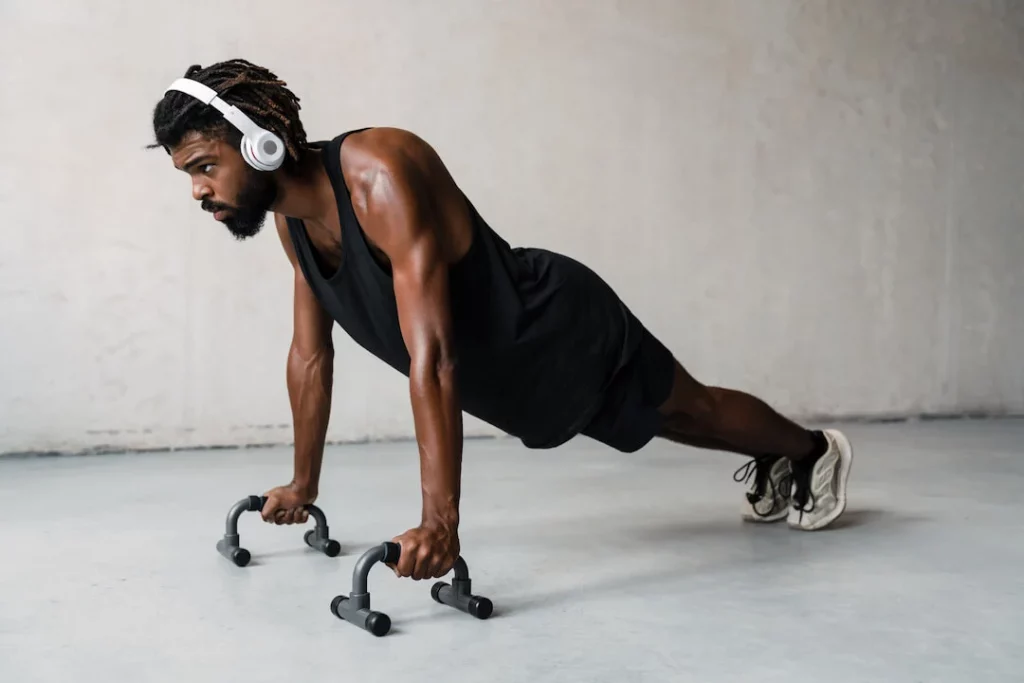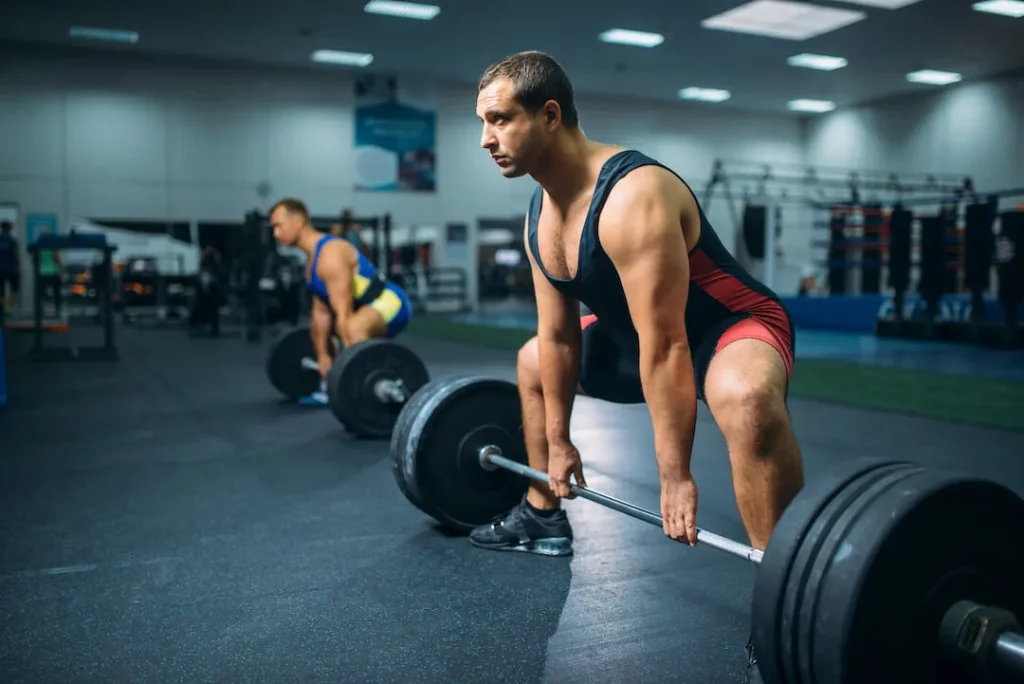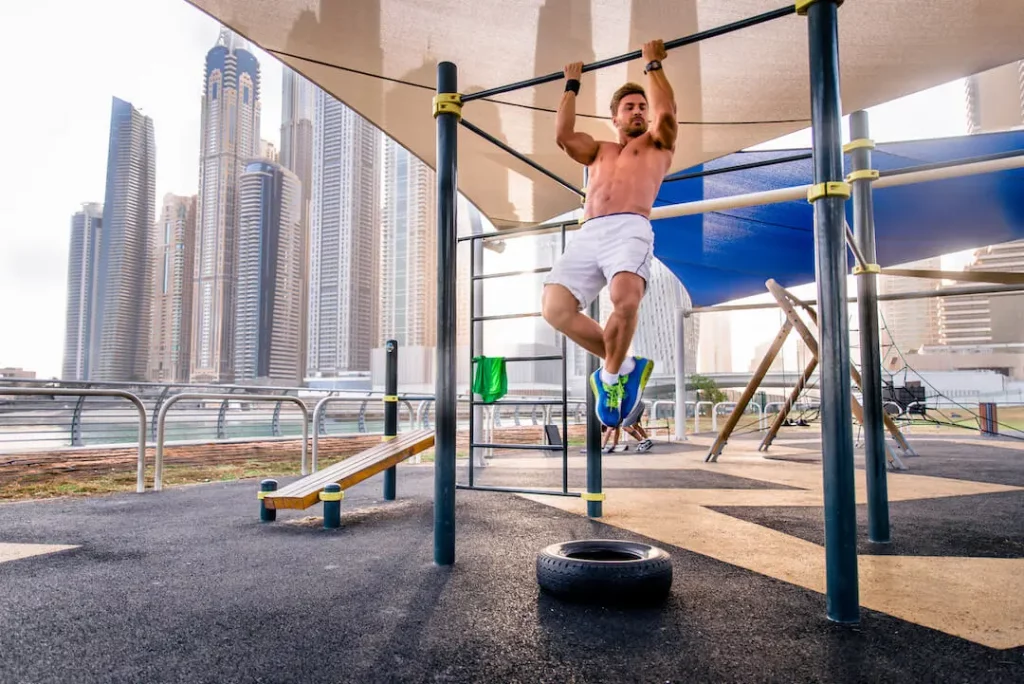Working on your back and biceps is an excellent way to build a strong body. Which biceps and back workout exercises are scientifically proven? Let’s find out!
Exercising is helpful for developing functional strength, which is vital in allowing you to perform daily routines easily and minimize your risk of injury.
The best exercises for optimal biceps activation and growth include push-ups, single-arm dumbbell preacher curl, incline dumbbell curl and dumbbell hammer curls. On the other hand, deadlifts, pull-ups, and bent-over rows recruit multiple back muscles to increase functional strength and stability.
In this article, I will go through the best scientifically-proven biceps and back workouts. If you are facing the challenge of figuring out which exercise options are best for you, read on to find out some of the tried and proven ways of working on these core areas.
Table of Contents
Best Biceps Exercises
There are many different bicep exercises, most of which will provide impressive results. However, the following are some of the most effective bicep exercises according to research:
- Push-ups
- Single-arm dumbbell preacher curl
- Incline dumbbell curl
- Dumbbell Hammer Curls
Push-Ups
One of the best yet simplest bicep and back workouts is the push-up. According to a study by Malik and Ramakrishnan, push-ups are an effective exercise for targeting the bicep brachii while also strengthening your lower back.
While most trainers ignore this exercise, numerous studies show that push-ups can greatly promote muscle development while also building strength, including a study by You-Sin Kim.
According to researchers, the best program for your biceps should involve five workouts per week, with 10 to 12 repetitions for every set over three to four months.
You should also take at least two rest days between your workouts.
For best results, Malijk and Ramakrishnan advise focusing on your body form and stability. To perform this exercise correctly, follow these steps:
- Position your feet on a central rod and both your hands on smaller rods. Make sure that your shoulders and arms are apart, and keep your torso straight and steady during the exercise.
- Begin with your elbows at full extension, and then bend your elbows as you descend towards the ground.
- Flex your elbows and push your upper body upwards until you fully stretch your arms in the second stage.
Repeat this for 10 to 12 repetitions per set.
For beginners, perform three sets of twelve to fifteen repetitions with a 2 minute rest period in between sets. For intermediate trainers, perform four sets of 18 to 20 repetitions with a 3-minute rest period.
The researchers recommend five sets of 20 to 22 repetitions for advanced trainers, with four minutes rest period.

Single-Arm Dumbbell Preacher Curl
Researchers Bobby and Nafiz highlight the single-arm dumbbell preacher curl as one of the best bicep and back exercises for building bigger biceps.
Follow these steps to complete the dumbbell preacher curl:
- Hold the dumbbell with one arm and place this arm on the preacher bench.
- Researchers recommend slightly angling your body for best results, then slowly lowering the dumbbell.
- Ensure that you fully stretch your hand and squeeze your biceps, curling the weight back to the original position.
Repeat this exercise for three sets, each having six to eight repetitions, alternating each hand for proper biceps balance. Rest for 90 seconds between each set. According to the researchers, five sessions every week are enough, two times a day over two months.
Incline Dumbbell Curls
According to experimental data from research by Krzystofik and colleagues, dumbbell curls are one of the best hypertrophy-oriented resistance exercises for an impressive physique.
The above is consistent with Bobby and Nafiz’s study, which shows that performing these curls in an incline stance can add to the exercise’s effectiveness. For this exercise, follow these instructions:
- Set your bench to a 60-degree angle. Ensure that your palms are facing inwards, and keep your torso as still as possible.
- Flex your biceps muscles while in this position, initiating a curling motion until your forearms are parallel to the ground. One of the pro tips is to hold this position for about your second for optimal bicep activation and then lower the weight slowly.
- Control the eccentric until your arms are back to the original position for best results.
Perform this exercise for sets of three, each of 8 to 10 repetitions. Allow a 90-second rest period. For optimal results, perform five sessions per week, twice a day over a two-month period.

Dumbbell Hammer Curls
The dumbbell hammer curls earn their position on this list of the best bicep and back workouts for their effectiveness in bicep muscle activation. Follow the steps below to complete your dumbbell hammer curls:
- Hold a dumbbell in each arm for this exercise, and keep each arm by your side. Ensure that your palms are facing inwards for best results. Stiffen your muscle so that your biceps are doing the work, with no assistance from other large muscles on your torso.
- Curl the dumbbell until you fully flex your arms and pause for a few seconds.
- Lower the weights slowly, controlling the eccentric until the dumbbells are back to the starting position. You can perform this motion with two arms at a time or alternate each arm for some variation.
Perform this exercise in sets of three, each with 10 to 12 repetitions. Pause for 90 seconds between sets. Like the other exercises in this list, do this workout for five sessions every week, twice a day over two months.
Best Back Exercises
When it comes to the best back exercises for a more muscular, bigger back, the following are the best scientifically-proven exercises:
- The deadlift
- Pull-Ups
- Bent-Over Rows
The Deadlift
The deadlift is one of the most effective back exercises for a more muscular back.
According to research by Fischer, Calley, and Hollman, the deadlift delivers the highest muscle activation for the paraspinal musculature relative to other exercises.
This exercise is also clinically proven to be effective at reducing back pain while also enhancing functional strength. For safety, start with a manageable weight to limit the strain on your spine, and gradually increase the weight as your capability increases.
As explained by Clifton Holmes in his study, it is crucial to maintain proper biomechanics in the lifting motion. Start in the correct position, ensuring that you do not warp your back during the movement.
Holmes also recommends performing the deadlift in a slow, controlled manner for optimal safety. If you are unfamiliar with this exercise, start with an unloaded bar or with minimal weight until you perfect your technique.
This exercise has multiple variations, including the sumo deadlift, the conventional deadlift, and the Romanian deadlift.

Pull-Ups
Like the deadlift, the pull-up is a multi-joint exercise that targets the back and especially the lats. In addition to promoting muscular strength, it also targets the biceps and upper body muscles, making it one of the best biceps and back workouts.
According to a study by Snarr and his colleagues, pull-ups activate the back muscles and promote muscular strength and hypertrophy.
In her research published in the Journal of Physical Fitness, Medicine & Treatment in Sports, Hewitt also notes that the pull-down delivers effective muscle recruitment during the pulling motion.
For best results, control both the eccentric and concentric movements for optimal muscle activation, taking your time and focussing on the mind-muscle connection. You can also add weights for greater activation.

Bent-Over Rows
The bent-over row also earns its place in this list of the best biceps and back exercises because of its role in activating three of the five back muscles to a high degree. To be precise, this exercise activates the lower trapezius, the middle trapezius, and the erector spinae muscles to a greater extent than pull-ups.
Follow the steps below to complete this exercise:
- Grip the barbell with your hands and ensure that your palms are facing downwards. Your elbows, shoulders, and wrists should be aligned.
- Lift the bar from the rack and bend forward at your hips.
- Lower the weight slowly towards the floor until you fully stretch your elbows, and then pull the weight back up towards your sternum.
After this motion, return the weight to the original position and repeat. For best results, keep your torso stiff, and control the eccentric and concentric movements.
Frequently Asked Questions
Here are a couple of frequently asked questions about biceps and back workouts, giving you a better idea of what you should be doing to optimize your results.
How Often Should You Train Your Back and Biceps?
You should train your back and biceps a couple of times a week. Research suggests that increasing training volume has a positive effect on muscle growth in trained men. However, a study by Yang recommends training each muscle group at least twice a week for optimal results.
As explained by Yang, the recommended physical activity for an adult is “at least 150-300 minutes per week of moderate intensity, or 75 to 150 minutes per week of vigorous intensity aerobic physical activity.” Therefore, I recommend training each muscle group at least twice a week.
Is Partial Range of Motion Better than Full Range of Motion?
While partial range of motion has been linked with increased muscular stress which may optimize muscle growth, I recommend performing your exercises at full range of motion, especially if you are a beginner or at the intermediate level of training.
According to a study by Valamatos et al., “restricting the range of motion to shorter muscle lengths promotes greater physiological cross-sectional area and angle-specific strength adaptations.”
This essentially means that shorter range of motion can significantly increase muscle stress, resulting in muscle growth, especially if you feel like your gains have plateaued.
However, for optimal muscle development with minimal risk of injury, I recommend following the guidelines provided by Pallares and his colleagues, whose study concludes that “full range of motion is more effective than partial range of motion to maximize muscle strength and lower-limb muscle hypertrophy.”
This study also concludes that full range of motion also has a positive impact on building functional strength.
Final Thoughts
There is no shortage of exercises that target the back and bicep muscles. The exercises mentioned above are consistent with data from a vast body of research, supporting their success and effectiveness in promoting proper biceps and back development.
However, it is essential to ensure that you perform these exercises properly to minimize injuries and promote optimal muscle growth. Focus more on doing the exercise correctly and forming a mind-muscle connection instead of placing too much emphasis on moving larger weights in a short period.
Thanks for reading!
If you enjoyed reading this article, you may want to checkout Bodybuilding Workouts for Mass and Tone of Muscles and The Perfect Triceps and Chest Workout Revealed.
Sources
- Research Gate: Design and Analysis of Biceps and Triceps Muscle Strengthening Structure
- National Library of Medicine: Effects of the Push-Up Exercise at Different Palmar Width on Muscle Activities
- International Journal of Research Publication and Reviews: Most Effective Dumbbell Workouts for Beginners in Building Bigger Biceps
- American Council on Exercise: What is the Best Back Exercise
- Wiley Online Library: Effects of Range of Motion on Resistance Training Adaptations: A Systematic Review and Meta-Analysis

About The Author
M.D Mark D. is a Health and Wellness professional writer. Mark has authored many health articles around the following topics: Men’s Health, Women’s Health, Fitness, Nutrition, Pets Health, Mental Health, Medicine, and Supplements.